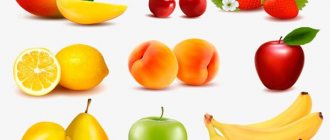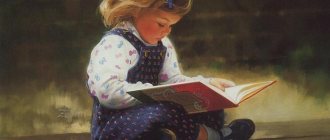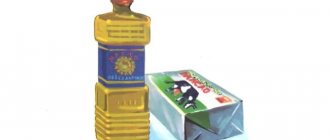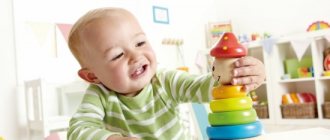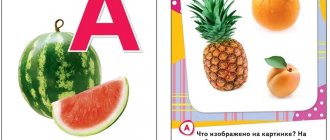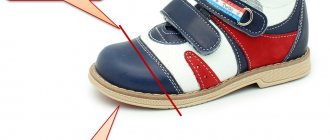Fourth wheel
Target. Development of thinking.
Task. Familiarization with the surroundings (clothes, shoes, hats).
Equipment. Subject pictures with images of clothes, shoes, hats.
Progress of the game
The teacher will put pictures on the typesetting canvas with images of three items of clothing and one pair of shoes or three pairs of shoes and one headdress and invites them to examine and name them. You can invite children to remember poems, nursery rhymes, and riddles about these objects. Then the children are given the task of determining which picture is odd and why.
You can play the game in a similar way by placing on a typesetting canvas three pictures with images of multi-colored clothes and one with images of plain clothes, or three pictures with images of clothes for winter and one picture with images of clothes for summer, etc.
What's missing? Target. Development of visual attention and perception. Task. Familiarization with the surroundings (clothes, shoes, hats).
Equipment. Subject pictures with images of clothes, shoes, hats.
Progress of the game
The teacher will place pictures on the typesetting canvas with images of four to five items of clothing, shoes, and hats, asking them to examine and name them. You can invite children to remember poems, nursery rhymes, and riddles about these objects. Then the children are asked to close their eyes. At this time, the teacher removes one of the pictures. Having opened their eyes, children must determine what is missing.
What changed? Target. Development of visual attention and perception. Task. Familiarization with the surroundings (clothes, shoes, hats).
Equipment. Subject pictures with images of clothes, shoes, hats.
Progress of the game
The teacher will put pictures with images of clothes, shoes, and hats on the typesetting canvas, asking them to look at and name them. You can invite children to remember poems, nursery rhymes, and riddles about these objects. Then the children are asked to close their eyes. At this time, the teacher swaps two pictures or puts another instead of one picture (thin socks instead of woolen socks). Having opened their eyes, children must determine what has changed or which pictures have swapped places.
What appeared? Target. Development of visual attention and perception. Task. Getting to know those around you! (clothes, shoes, hats).
Equipment. Subject pictures with images of clothes, shoes, hats.
Progress of the game
The teacher places pictures with images of four to five items of clothing, shoes, and hats on the typesetting canvas, asking them to examine and name them. You can invite children to remember poems, nursery rhymes, and riddles about these objects. Then the children are asked to close their eyes. At this time, the teacher places another picture on the typesetting canvas. Having opened their eyes, children must determine what object has appeared.
Choose a scheme
Target. Development of sound word analysis skills.
Task. Familiarization with the surroundings (clothes, shoes, hats).
Equipment. Subject pictures with images of a hat, fur coat, jacket, raincoat. Cards with sound patterns of these words.
Progress of the game
The teacher places pictures with images of a hat, fur coat, jacket, and cap on the typesetting canvas. Children look at the pictures and name them. Then the teacher invites the children to take one card with a sound diagram of the word from a bag, chest or container. Children complete the task and then look at the diagrams. Next, they are given the task of putting diagrams under those pictures whose names correspond to the diagrams in terms of sound composition.
Syllabic domino Goal. Improving the skill of syllabic analysis of words.
Equipment. Subject pictures with images of clothes, shoes, hats (scarf, raincoat, fur coat, hat, trousers, dress, leggings, sneakers, mittens, overalls). Cards with images of one, two, three and four squares.
Progress of the game
The teacher will place pictures of clothes, shoes, and hats on the typesetting canvas. Children look at and name them. The teacher puts cards with images of one, two, three and four squares in a row. He explains that the squares represent the number of syllables in the names of objects. Next, children are given the task of arranging pictures with images of clothes, shoes and hats into a square, depending on how many syllables their names are divided into.
How to conduct lessons with your child using cards
When studying new pictures, you need to correctly name what is shown on the card, tell what it is, what it is used for. You can even play the game find the object. For example, collect some objects in the house, show them on a card, and then invite the child to find it in a pile of things. The child will really like this game, and you will spend your time usefully and happily.
Here are educational cards for children “Items of clothing” containing pictures of clothing for children from 36 items.
Educational cards for children “Items of clothing”
Educational cards for children “Items of clothing”
Educational cards for children “Items of clothing”
Educational cards for children “Items of clothing”
Educational cards for children “Items of clothing”
Educational cards for children “Items of clothing”
Educational cards for children “Items of clothing”
Educational cards for children “Items of clothing”
Educational cards for children “Items of clothing”
Educational cards for children “Items of clothing”
Educational cards for children “Items of clothing”
Educational cards for children “Items of clothing”
Educational cards for children “Items of clothing”
Clothes in English for children
If you think about it, in any language the topic of clothing is devoted quite a lot of time, because in addition to simple descriptions, such as a blue dress, red shoes, we can make the description more complex and detailed. The same is true in English.
In the article we will analyze the names of the main items of clothing in English with translation and transcription. In addition, you will be presented with various games, exercises and videos for fun and easy memorization.
Directly clothes in English will be clothes [kləʊ(ð)z] (close, sound Z interdental).
For a more complete immersion in the topic of clothing, it would be a good idea to study the article on flowers in English with pronunciation so that your child can describe the item in more detail.
ATTENTION!
REGISTER FOR COURSES! RECRUITING! More details on the page: https://academy.multi-mama.ru/product/multi-predlozhenie/
For example, blue jeans - blue jeans, yellow t-shirt - yellow T-shirt, black boots - black boots and so on.
How to make cards and pictures of clothes for children
The presented clothing pictures need to be downloaded and printed, if you want to paste them onto cardboard or other thick paper. Cut out the cards and show them to your child in a playful way.
You can play with one child or in a group of children. In this case, tasks for children may be different:
1) name the objects correctly;
2) tell what you can wear with what;
3) which of the items belong to men’s clothing and which to women’s;
4) what is worn in winter, spring, summer, autumn.
The most important thing in communicating with a child is, undoubtedly, the positive attitude of an adult, then learning will be easy and beneficial for the child.
Educational games for children are very different. Children playing educational games train their own thinking, ingenuity, imagination, and creativity.
Didactic games and exercises on a lexical topic: “Clothing. Shoes. Hats".
Didactic games and exercises for kindergarten
Author:
Zhelevskaya Oksana Nikolaevna
Description of work:
I bring to your attention didactic games and exercises on the lexical topics “Clothes”, “Shoes”, “Hats”. The games are intended for children of older preschool age. During the games, children practice word formation and inflection in an entertaining way. Games can be used for individual and subgroup work. This material will be useful to speech therapists of preschool institutions, educators, as well as parents when playing the game at home.
Target:
consolidation of acquired knowledge in classes in an entertaining game form.
Tasks:
— test children’s knowledge, skills and abilities on the topic; - learn to apply them in practical activities - games; - cultivate interest in speech games.
The game “Whose clothes are Mom’s or Tanya’s?”
Target:
practice forming possessive adjectives.
Game material.
- pictures with items of adult and children's clothing and shoes
— pictures of two closets: A closet for mom’s clothes and a closet for Tanya’s clothes.
Progress of the game:
An adult puts pictures of wardrobes, pictures of clothing and shoes on the board. Children come to the board, choose a picture, tell whose item of clothing it is and put it in the closets.
— This is my mother’s long dress. — This is Tanino’s blue dress. - This pink blouse is Tannin's. — This white blouse is my mother’s. — These black trousers are my mother's. — These lilac trousers are Tanina. - This fluffy skirt of Tanin. — This tight skirt is my mother’s, etc.
Game "Pick the sign"
Target:
practice selecting adjectives for nouns.
Progress of the game:
The child names an item of clothing, and then selects attributes for this item of clothing,
for example, a dress - beautiful, long, evening, elegant.
The child must select at least 3 signs.
Game “Name it kindly”
Target:
to train children in the formation of nouns with diminutive suffixes –chik-, -echk-,- ochk-, -enk-, -onk-.
Progress of the game:
An adult calls an item of mother’s clothing or shoes, and the child calls it Tanya, and calls it affectionately,
for example,
“Mom has a dress, and Tanya has ...
a dress
.”
- Mom has shoes, and Tanya has... shoes.
- Mom has trousers, and Tanya has...
trousers.
- Mom has a jacket, and Tanya has...
a jacket
.
Game "What is what?"
Target:
practice forming relative adjectives.
Progress of the game:
An adult says: “Mom and Tanya have a lot of clothes.”
It is sewn from different fabrics. Let's tell you what items of clothing are made of and what they are. - Dress made of silk (what kind?)
- silk.
- Wool jacket (what kind?)
- wool.
— Boots made of leather (what kind?)
– leather.
- Boots made of rubber (what kind?)
- rubber.
- Coat made of drape (what kind?)
- drape.
- Corduroy trousers (what kind?)
- corduroy.
Game "One - Many"
Target:
developing the skill of forming noun forms in the genitive plural.
Progress of the game:
The child is asked to name an item of clothing with the word many,
for example,
“Mom has one dress, but Tanya
has many dresses
.”
“Mom has one skirt, and Tanya has many skirts...
The game “Two - two””
Target:
practice the ability to coordinate the numerals two, two with nouns.
Progress of the game:
The adult invites the child to answer the questions: - What can you say two things about?
- Two dresses, two coats, two raincoats...
- What can we say two about?
— Two T-shirts, two fur coats, two jackets, two skirts, two sweaters...
Game “Count and Name”
Target:
practice agreeing numerals with nouns.
Progress of the game:
An adult shows a card depicting items of clothing, shoes, hats and invites the child to help Tanya count things.
For example,
One hat, two hats, three hats, four hats, five hats.
One jacket, two jackets... five jackets. One pair of boots, two pairs of boots, three pairs of boots... six pairs of boots. Game "Say the other way around"
Target:
Exercise children in selecting words that have opposite meanings (antonyms).
Progress of the game.
The adult invites the child to answer the other way around: Clean shoes - ...
dirty shoes;
New boots - ...
old boots;
Wide skirt - ...
narrow skirt;
Long coat - ...
short coat;
White jacket -...
black jacket.
Game "Put it into pieces"
Target:
practice classifying items of clothing, shoes and hats.
Progress of the game.
An adult shows a picture of a closet with shelves and says: “Look - this is a closet.” Each item in it has its own place: hats are stored on the top shelf, shoes on the bottom, and clothes on the middle. Let's put the pictures depicting various items of clothing, shoes and hats in their places.
Children lay out the pictures and explain: - I will put the hat on the top shelf, because it is a headdress; - I’ll put the jacket on the middle shelf, because it’s clothes; — I’ll put the slippers on the bottom shelf, because these are shoes….
Game "Mine, mine, mine"
Target:
practice agreeing nouns with possessive pronouns my, mine, mine, mine.
How to play:
An adult lays out items of clothing and shoes on the table.
Invites the child to look at them carefully and say to which object the word “mine”, “mine”, “mine”, “mine” is suitable. My (what?)
- sweater, sundress, scarf, suit... My
(what?)
- jacket, sweater, fur coat, skirt... My
(what?)
- boots, shoes, shorts, trousers... My
(what?)
- dress, coat…
Game "Four Wheel"
Target:
activate children's vocabulary on the topic, develop mental activity and attention.
Progress of the game.
The adult shows the child the pictures, asks them to name them, indicate the extra picture in each row and explain why it is extra.
I wish you success!
DOWNLOAD Educational cards for children “Items of clothing” for free HERE
This entry was posted in The world around us, Developmental cards, Development of speech and fine motor skills and tagged children's pictures for children clothes, pictures clothes for children, pictures clothes to print, cards for children clothes, cards clothes, cards clothes for kindergarten, , cards with clothes for children, items of clothing. Bookmark the permalink.
Related posts:
- Learning colors is an educational game for children, how to learn colors with a child, educational games for preschool children
- Copybooks for kids to print for free, my first copybooks - preparing your hand for writing
Comment
Video song about clothes in English for children
You can find a theme song on almost any topic. They are specially invented to support children's interest in the topic, as well as to make the lesson more fun.
The song can be just an ordinary audio file that you turn on, but it will be much more effective to support the song with visual material.
Here, for example, is a funny song with a small visual cartoon:
Let us remind you once again that it is not a bad idea to reinforce the rhymes and songs you are learning with visuals, for example, if you are reading a poem about a yellow sweater and blue jeans, prepare cards with images of these things.
